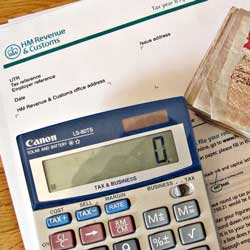Understanding your PAYE code if you have two or more concurrent employments
October 29th 2009 1:43 pm
For the average employed tax payer with a single source of employment and no major savings and investments, the pay as you ea ...

October 29th 2009 1:43 pm
For the average employed tax payer with a single source of employment and no major savings and investments, the pay as you ea ...

May 30th 2013

November 11th 2009

New App For Small Business Tax Planning
May 12th 2013

Latest Tax and Business News Has Now Moved...
September 2nd 2016

Should Jimmy Carr Be Apologising for Tax Avoidance?
June 22nd 2012
what type of accounting work do you need help with? choose below.